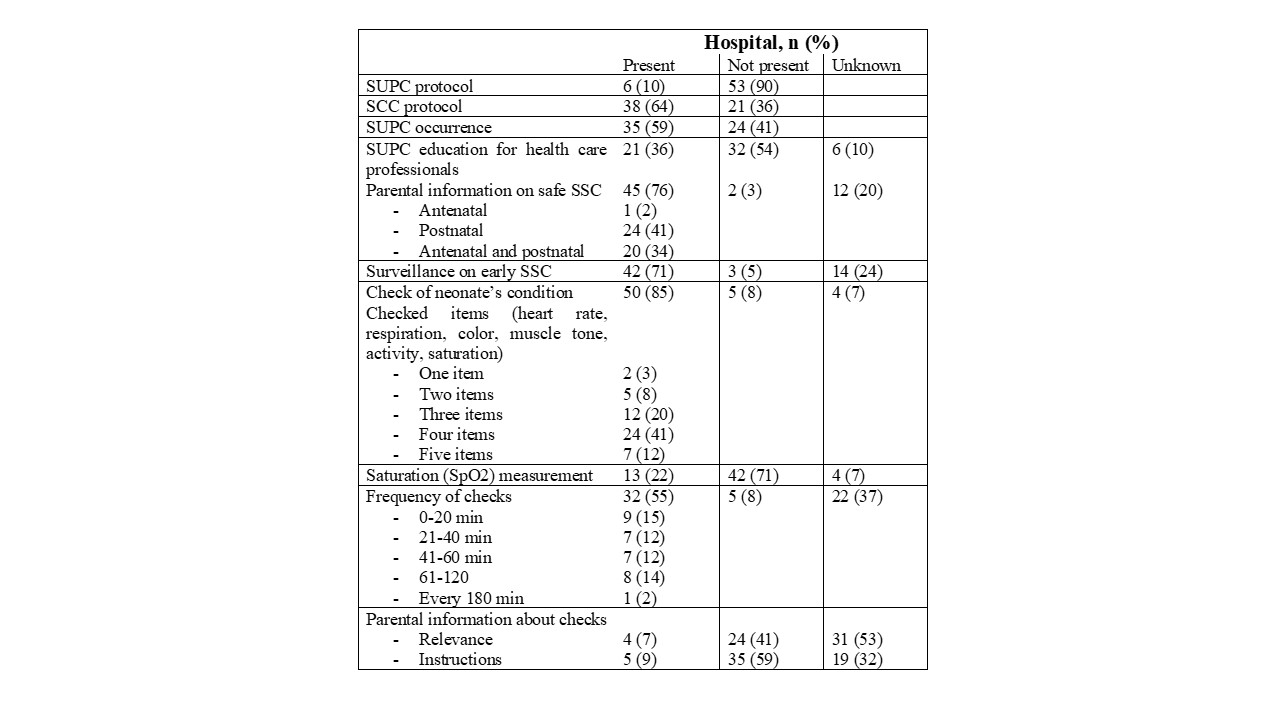Neonatal-Perinatal Health Care Delivery: Practices and Procedures
Neonatal-Perinatal Health Care Delivery 2: Practices: Monitoring, Devices, Respiratory Care
742 - In-hospital use of protocols on safe skin-to-skin contact and sudden unexpected postnatal collapse: a national questionnaire study.
Publication Number: 742.245

Christian V. Hulzebos (he/him/his)
Neonatologist, Principle Investigator
Beatrix Children's Hospital, University Medical Center Groningen
Groningen, Groningen, Netherlands
Presenting Author(s)
Background:
Sudden unexpected postnatal collapse (SUPC) of the newborn is a life-threatening event, mostly occurring in the first hours of life. Unsupervised postpartum skin-to-skin contact (SSC) is a major risk factor of SUPC. The incidence of SUPC in the Netherlands varies from 1/11.000 to 1/8000 live born newborn infants ≥ 35 weeks’ gestation. A few years ago, the Dutch Health and Youth Care Inspectorate recommended to incorporate postpartum safety measures in hospital protocols to prevent SUPC. Yet, it is unknown whether birth hospitals have implemented protocols on SUPC or SSC for that matter.
Objective:
To study the use of clinical protocols on SSC and/ or SUPC in hospital settings in the Netherlands.
Design/Methods:
In December 2021 a questionnaire was sent to all 70 Dutch hospitals with an obstetric and pediatric ward. The query consisted of items regarding the use of protocols on SUPC and/ or SSC. Furthermore, we evaluated whether (1) SUPC had occurred in that particular hospital, (2) any education on SUPC was provided for health care professionals, and (3) parents received information on SSC. We asked which and how frequent vital signs were checked postnatally and whether parents received information on the clinical relevance of these checks or instructions to check their infant’s condition.
Results:
Responses were retrieved from 59 (85%) different hospitals. Six (10%) hospitals used protocols on SUPC and 38 (64%) on SCC (Table 1). SUPC had occurred in 35 hospitals. Health care professionals received education on SSC in 21 (36%) hospitals, and parents received information in 45 (76%) hospitals. Surveillance on early SSC was done in 42 (71%) hospitals. Infant’s condition was checked in 50 (85%) hospitals, and consisted of three or more items in 43 (73%) hospitals. In 13 (22%) hospitals SpO2 was measured in the first hours after birth. Parents received information about these checks and what to check themselves in 4 and 5 hospitals, respectively.
Conclusion(s):
A substantial number of Dutch hospitals have implemented SCC protocols, but only a minority use SUPC protocols. Surveillance practices to prevent postnatal collapse differ between hospitals, regarding type, number, and control frequency of infant’s vital signs. Our national findings underline the urgent need to implement a national guideline on SUPC prevention.
